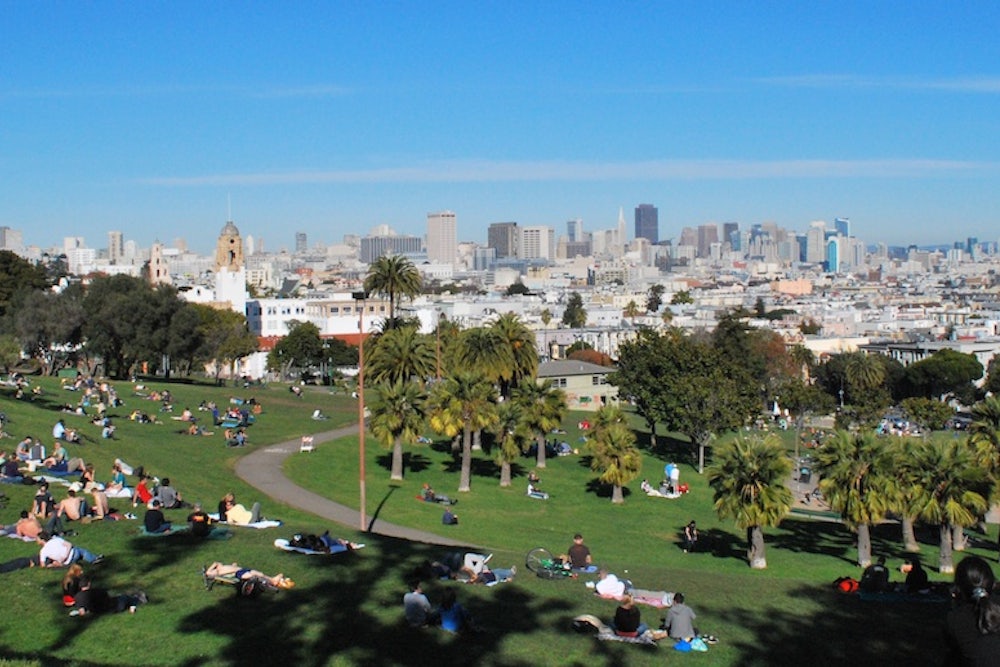The first time wealth transformed San Francisco, in the Gold Rush of 1848, the city didn't just get richer, and transform into a place robber barons called home. It also got an influx of new, poor immigrants, many Chinese, who helped build railroads and settled the city into its modern contours. The latest time that wealth transformed San Francisco, as detailed in a New York Times article today, it has begun to push out the poor—and longtime residents are disturbed by the way this has changed the city. Tech guys haven't just become the bad guys in pop culture; they're the bad guys in their home city, too.
Resentment simmers, at the fleets of Google buses that ferry workers to the company’s headquarters in Mountain View and back; the code jockeys who crowd elite coffeehouses, heads buried in their laptops; and the sleek black Uber cars that whisk hipsters from bar to bar. Late last month, two tech millionaires opened the Battery, an invitation-only, $2,400-a-year club in an old factory in the financial district, cars lining up for valet parking.
For critics, such sights are symbols of a city in danger of losing its diversity — one that artists, families and middle-class workers can no longer afford. On the day of Twitter’s public offering this month, 150 demonstrators protested outside the company with signs reading “People not profit” and “We’re the public, what are you offering?”
Neighborhoods like the Mission, which had only begun to gentrify in recent-ish years, have been pushed even farther along in that process by the arrival of nearby residents like Mark Zuckerberg and Ev Williams, and other young men with cash to throw around. Just as gracious Nob Hill suited the tastes of the robber barons, so does a dense, restaurant-filled, mixed-income urban neighborhood suit the tastes of millenial machers. (As for living in Silicon Valley—well, why would you want to live near your sausage factory?) Other neighborhoods have become downright unrecognizable, the Times points out, citing the transformation of Fort Mason, now nicknamed "Frat Mason" for the high concentration of tech "bros" who work there. The recent IPOs of big tech companies like Facebook and now Twitter have made wealth actual rather than theoretical for many young tech workers.
Mayor Ed Lee, whom San Franscisco magazine profiled at length in its December issue, credits the newfound tech wealth with helping swing the city out of the recession. He's been enthusiastically pro-development throughout his three years at the helm, a somewhat surprising turn of events for those low-income advocates who liked Lee's history as an activist who fought for Chinatown housing-project residents. Lee is well-liked. But the question he's facing now is how much is too much. San Francisco has the highest median rent in the country, with prices that make even a New Yorker anxious (that average is $3,250/month for a two-bedroom). Rents have increased by 10 percent this year, following a 13 percent upswing between 2012 and 2011, a remarkable pace.
In New York, where tech is now the second-biggest industry, there's also been a squeezing of the middle class in recent years. (It's harder to disaggregate tech money from, say, wealthy European money here, when looking at how the city has changed.) There are plenty of reasons why comparing the two cities is an imperfect parallel, but still, incoming New York mayor Bill de Blasio might see lessons in Lee's tenure. Lee's naysayers believe he was unable to transcend the city's special interests and machine politics, whatever his own fealty to the concerns of the poor might be. Cities like these are where young people want to live now. The course San Francisco and New York chart in the next few years will determine whether all but the wealthiest of them will be able to to grow older in them.
